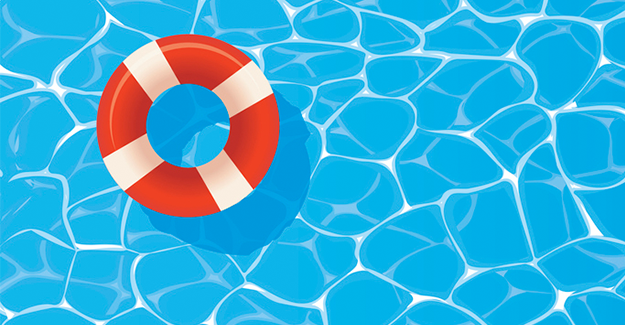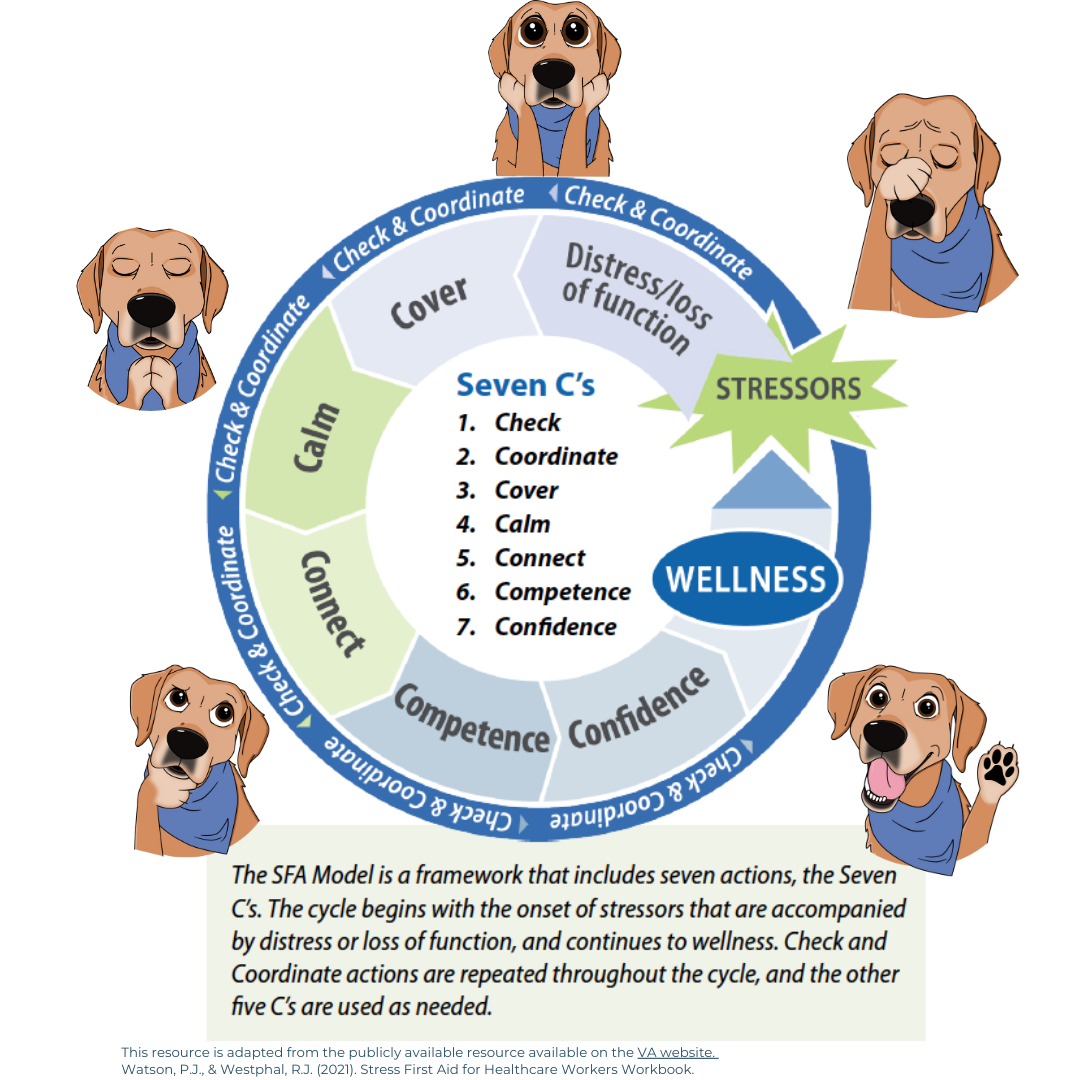7 Cs of Stress First Aid: See the stress, stop the stress

It’s been a physically and emotionally exhausting shift, including seven euthanasia cases, three staff callouts, and one extremely long day. You climb into your car and close the door. Immediately, you are overwhelmed by all the emotions you’ve stuffed away since that morning.
When you arrive home, you snap at your spouse and kids over the smallest inconveniences and pour yourself a large glass of wine. But one glass turns into several, and your spouse asks, “Are you okay?” That phrase immediately sets you off and starts an argument. Upset and drained, you go to bed without even eating dinner.
Does this scenario seem familiar? I know the line about snapping at my spouse and having the glass of wine makes me feel personally attacked: I’ve definitely found myself there before (and if we’re being honest, a majority of us probably have).
Which stress zone are they in?
In my last post on “Stress First Aid for veterinary professionals,” we learned about the Stress Continuum. What stress zone do you think this person is in?
I would say this example reflects someone in either the orange or red zones, due to the significant impairment experienced at home. If we had extended this example to include instances throughout the workday, we likely would see an impact on functioning in the workplace as well. We would also want to consider if this has been a persistent pattern of behavior or if this was an isolated response to a very, very tough day.
Once we have learned to recognize stress zones in ourselves and others, the Stress First Aid (SFA) framework can guide us when we need to identify what comes next. It includes seven actions that help identify and address early signs of stress reactions in an ongoing way (not just after “critical incidents”).

- Check: Identify which stress zone you and your co-workers may be experiencing (I think the phrase the kids used to use was, “Check yourself before you wreck yourself!”).
- Coordinate: Get ongoing assistance, follow-up resources, and support.
- Cover: Ensure everyone's safety in the situation—yours and that of others around you.
- Calm: Take actions that help suppress your stress response, such as deep breathing, walking away from a situation, or providing reassurance to yourself or a co-worker.
- Connect: Find social support as you work through your stressful situation, such as asking for help, attending a group, or going to therapy.
- Competence: Participate in activities you feel comfortable engaging in with a low chance of error.
- Confidence: Take slightly more challenging steps as you regain your sense of confidence in handling stressful situations.
You may notice that you already do some of these actions—and that's fantastic! I would bet that many of you are nodding along as you read some of the 7 Cs, thinking, “Yeah, I’ve done that before!”
The Stress First Aid framework and models are a way to normalize the conversation around checking in on mental/emotional wellbeing using a common language for better communicating and understanding stress levels. The 7 Cs turn these concepts into actions you can use to support yourself, your co-workers, and your teams.
The scene is safe
The first thing you’re told to do when getting trained for CPR and physical first aid is to check to make sure the scene is safe. (Did anyone else’s first-aid trainer make them wave their hands out like a referee and say “THE SCENE IS SAFE!” when they were getting trained? No? Just me?! OK, cool . . . ). Similarly, you will use the 7 Cs steps “Check” and “Coordinate” continuously when providing a response to support yourself or assist a co-worker.
Unlike a physical injury where you can see the effects of trauma, that is not always the case with a mental health stress injury. Now you may be thinking: Wait . . . what’s a “stress injury?” Jump ahead to learn about the four types of stress injuries.
Catch up on what we’ve covered so far:
- Read the introduction to the Stress Continuum.
- Practice with the NEWStat: Stress First Aid—Check Your Stress Zone video.
- Identify your red flags: Thinking of a recent bad day, what were some of the early signs that you were under increasing stress?
- Brainstorm: What are some activities that you can try for the “competence” tactic? Think of things that are relatively easy for you to accomplish without much risk of error.
NEXT UP: Learn about the 7 Cs self-care and support actions
_______________________________
Melyssa Allen, MA, NBC-HWC, DACLM, is a double board-certified lifestyle medicine professional and certified health and wellbeing coach with a diverse background as an animal trainer, fitness instructor, and mental health professional. Using her multidisciplinary expertise in the fields of lifestyle medicine, mental health, and behavior modification, she has dedicated her company, Veterinary Well-Being Buddy, to provide veterinary wellbeing coaching services.
Get to know Melyssa in Episode 59: Stress First Aid for Veterinary Professionals on Central Line: The AAHA Podcast (aaha.org/podcast).
Stress First Aid resources are available from the US Department of Veterans Affairs at ptsd.va.gov — veterinary graphic courtesy of Veterinary Well-Being Buddy.
Cover photo credit: © kaisorn E+ via Getty Images Plus
Disclaimer: The views expressed, and topics discussed, in any NEWStat column or article are intended to inform, educate, or entertain, and do not represent an official position by the American Animal Hospital Association (AAHA) or its Board of Directors.



